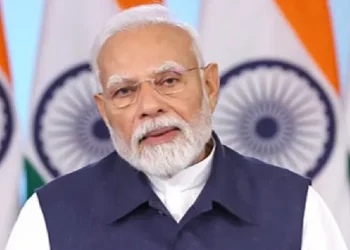It has been reported that Over the past 30 years, India has achieved the improbable: we leapfrogged from an agrarian economy to a services economy – without the interim manufacturing revolution that has been a defining element in the evolution of almost every other major economy, most recently in China and East Asia.
As India capitalized on new sunrise sectors like IT, ITES, BPOs, Shared Service Centers, and beyond, services have contributed more than manufacturing to India’s output growth, productivity growth and job growth.
At India’s current scale, Services sector growth is no longer adequate
India’s slowing economic trajectory of the recent few years is an early, but timely warning that the services-led economic model is no longer adequate for India. In other words, while the services revolution could help India accelerate from a sub-trillion-dollar economy in 2000 to a 2.5+ trillion-dollar economy now, it alone cannot steer our next phase of growth to a 5+ trillion-dollar economy. India’s next wave of growth will need all our sectors to fire: agriculture, services, and most importantly, manufacturing, the company said.
India needs a manufacturing revolution – Right Now!
For four distinct reasons, India will need a manufacturing revolution immediately.
- First, given its demographic dividend, India will need more than 100 million new jobs by 2030 to ensure sociopolitical stability and economic growth. For women’s participation in the workforce to meaningfully improve, we might need an additional 50 million new jobs. With increasing farm productivity, agriculture might not be a significant contributor to new job creation, and manufacturing (along with construction/ infrastructure) will need to be the job creation engine for India
- Second, our services-led model employs highly skilled labor and has created opportunity for the more educated population but has already started leaving behind socially weaker and less educated segments. With growing income inequality, manufacturing will be critical to catalyze the new middle class
- Third, India has run a relatively high trade deficit in recent years. Net exports have been negative for many decades, hovering at a net deficit of $150-180 billion in recent years. A vibrant manufacturing sector could help reduce India’s reliance on imports and strengthen its exports, potentially helping to correct the deficit
- Fourth, Covid-19 and to some extent the earlier US – China trade tensions, have created the possibility (not a certainty) of the much talked about China + 1 model. In sectors like pharma, specialty chemicals, mobile phones, electronics, etc., the shift is already quite real – and with the right focus, India might be able to capture this rare window of opportunity to build out its manufacturing in several other sectors as well. However, in the great manufacturing race of the 2020s, we will need to compete and win against a host of nations that are hoping to capitalize on the same shift – Asian countries like Vietnam, Indonesia, and Malaysia, developing nations across Eastern Europe, emerging Africa, Latin America, as well as developed nations like US trying to “reshore” manufacturing jobs.
Five Transformation Pathways for India’s Manufacturing Revolution, Catalyzing India’s manufacturing revolution will require India to act on five distinct transformation pathways:
Build global scale companies
India’s manufacturing revolution will increasingly need to be driven by large, global-scale conglomerates. Building global scale companies is an area where India lags significantly. For example, India lags several smaller countries in the Fortune 500 listing, with only seven large global-scale corporates – of which, only two are manufacturers.
Large, global scale corporations can help India compete better on the global stage – with better ability to innovate, automate, and maintain quality standards.
They can be engines of economic growth and job creation and can provide an umbrella for scaling thousands of MSMEs.
The Government and India’s private sector will need to work collaboratively and in-sync, to facilitate a whole new wave of global Champions from India
Develop Capabilities of The Future to Move Beyond Cost Arbitrage
Given the global competition for manufacturing jobs – including from several less developed nations, India will need to look beyond cost arbitrage and build capability-based advantage in its workforce (through skilling, innovation, quality, and sustainability) to accelerate its manufacturing evolution
Integrate Better Into Global Value Chains
India will need a substantial focus on trade agreements – especially with the EU and US, as well as bilaterally with UK, Australia, etc. to improve its export competitiveness
Reset Government Execution Paradigm
While India has achieved considerable improvements in Ease of Doing Business, we will need even further improvements – while also substantially reducing the overall cost of compliance
Accelerate Infrastructure Transformation
India’s focus on infrastructure will need to move from investments to outcomes – with a clear focus on real cost metrics including reduced transport cost per kilometer and competitive power tariffs
These pathways can collectively contribute more than $500 billion in annual economic impact by 2030, and position India as a global manufacturing hub in several key sectors – while creating millions of jobs, and transforming lives across the nation. (The Economic Times)












